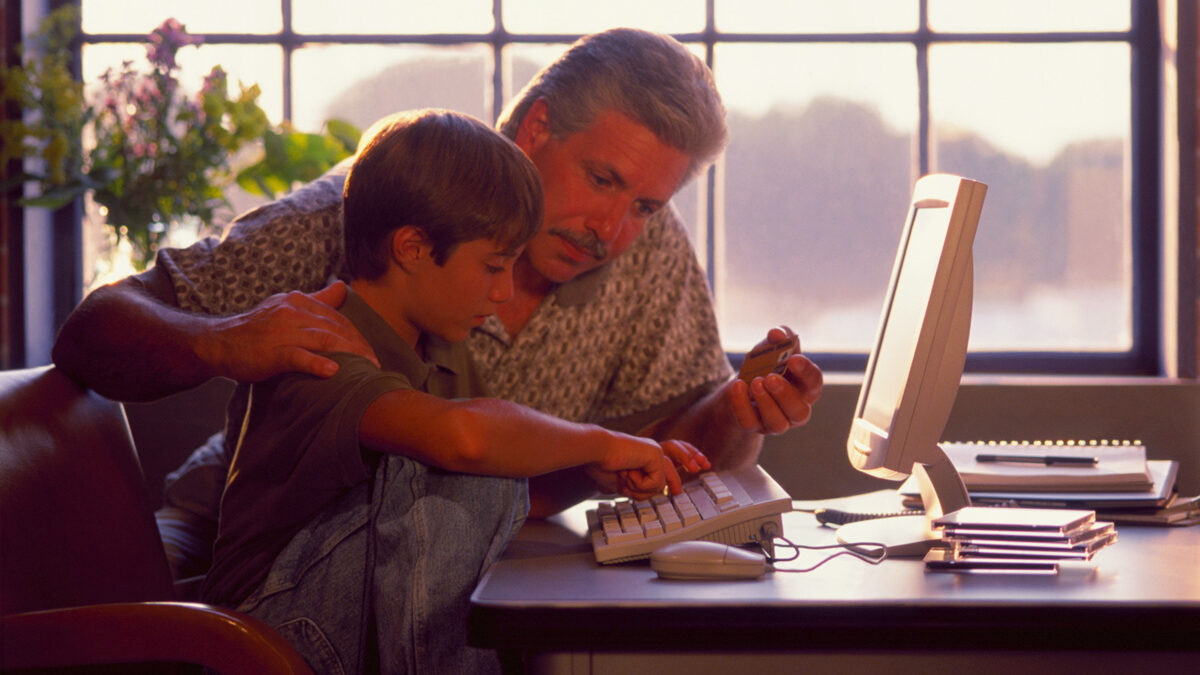
Give your kitchen a fresh face this fall

Turn great art into great home décor
Academic performance expectations, attendance at school functions, and balancing extra-curricular activities with time for homework – parents and children have a lot to talk about at the beginning of the school year. Few conversations, however, will be as important – or as fraught with tension – as discussing how children should, and should not, behave online.
While many kids look forward to reuniting with school friends from last year, they’ll be meeting new people, too. Many of those interactions will take place, in part, in the digital world, bringing online child safety front-of-mind for parents as back-to-school season arrives. To help protect your child while he or she is online, start the school year with three important conversations:
How to behave when connecting online
The anonymity of the Internet makes meeting strangers seem appealing and safe. But kids should use at least the same level of caution when meeting someone new online as they would in the real world. Explain to kids why they should never initiate or accept online contact from someone they haven’t first met in person; given all the information we tend to give away in our online profiles, it’s like walking up to a stranger on the street and inviting him or her into your home.
Employ tools like SafetyWeb to help keep kids safe online. The tool helps parents monitor online activity, and includes an active blog/forum that allows parents and pros to discuss the latest child-rearing challenges of the digital age. Review the privacy settings on your child’s social media accounts so that your son or daughter understands what’s visible to friends, and what is visible to everyone else (preferably, nothing). Create the social media accounts with your child so that you know what sites she uses and who her online friends are.
Establish designated times when children are allowed online for social media use and times when they can use the Internet for schoolwork. Never allow children to use the Internet behind closed doors. Yes, they’ll probably say everyone else does it and that you’re ruining their lives, but keeping Internet-enabled devices in a common area can help make it easier for you to protect your child.
How to behave when interacting online
As a parent, you have two concerns for your child’s online life: first, that he or she experiences no harm from online interactions. Second, that he or she causes no harm to others.
The digital world makes communication fast and easy, yet its drawbacks are many: it’s highly conducive to impulsive behavior, it’s difficult to accurately convey tone and intention, and it’s nearly impossible to erase something once it’s posted online. Children need to understand the limitations of this form of communication, and that missteps online can have a long-term impact in the real world.
The anonymity of the Internet has made it easier for people to be mean to each other, and given rise to a whole new type of bullying: cyberbullying. A study by isafe.org found that 58 percent of fourth- through eighth-graders have had mean or hurtful things said to them online, and (even more disturbingly) 53 percent admitted to having said something mean or hurtful to another person online.
Help your child understand the type of behavior that constitutes cyberbullying so that she can both avoid cyberbullies and avoid engaging in acts of cyberbullying. In addition to monitoring your child’s online behavior, encourage him to have a robust social life in the real world – the environment in which we really learn how to behave with others.
How to behave when interacting in person
While you’re teaching about appropriate online behavior, it’s important to reinforce lessons about being a good person in face-to-face interactions. Bullying has been around as long as people have; teach children how to recognize instances of in-person bullying, and help them learn techniques for coping with bullies.
Being a good citizen of the digital world starts with being a good person in the real world. Reinforce with kids the importance of good behavior both online and in person, and – most importantly – lead by example.
—(ARA)




